UKRAINE––Zhanna Kadyrova’s reimagines wall or floor tile treatments into “wearable” textiles like shirts and dresses in her ongoing Second Hand series––a project catalyzed while in Sao Paulo in 2014 after observing the rich decorative tile patterns used to cover Brazil’s shops, cafes, and homes.
One of the most striking aspects of Zhanna Kadyrova’s art, which includes photography, video, sculpture, performance, and installation, is her experimentation with forms, materials, and meaning.
Venice Art Biennale 2019.

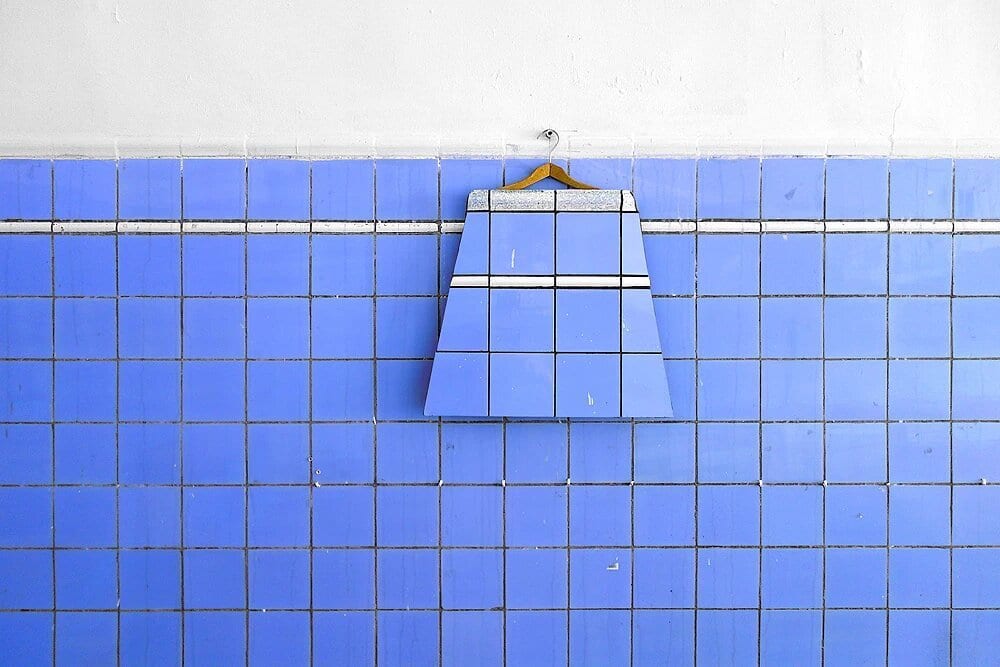
Her first works were constructed using cheap second hand tiles––hence the name––bolstered with construction materials such like concrete and cement. She has even used tile scraps from now defunct Soviet-era buildings in her home country of Ukraine––a process meant to, as Design Boom reports, “erase all trace of the country’s soviet past.
Kadyrova has been exploring the relationship between architecture and mosaic. carried out in different places and dubbed second hand, the project responds to the architectural and social memory of particular communities.
DesignBoom

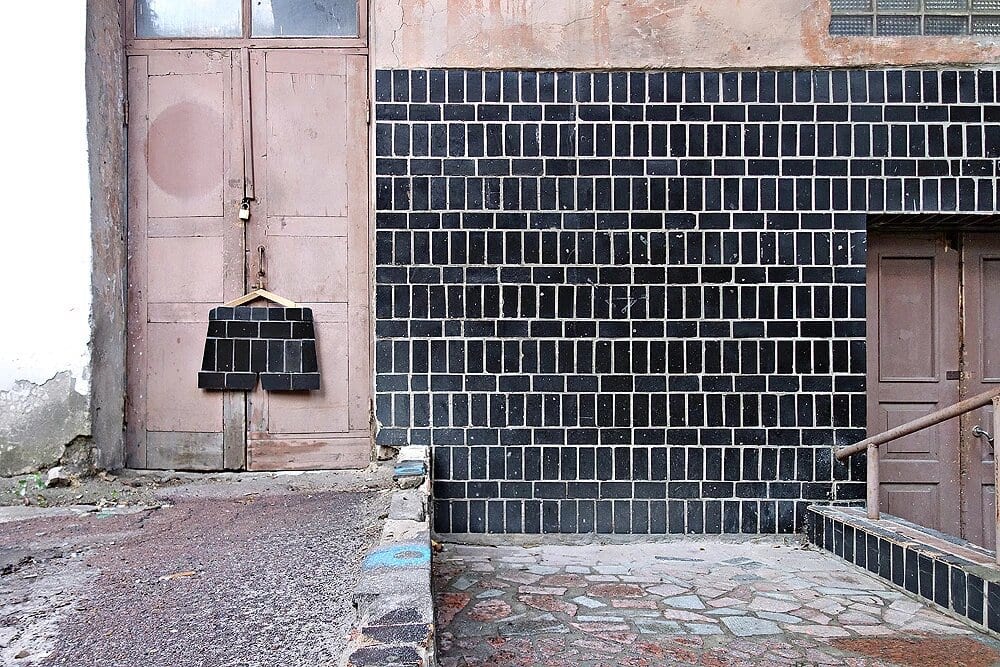
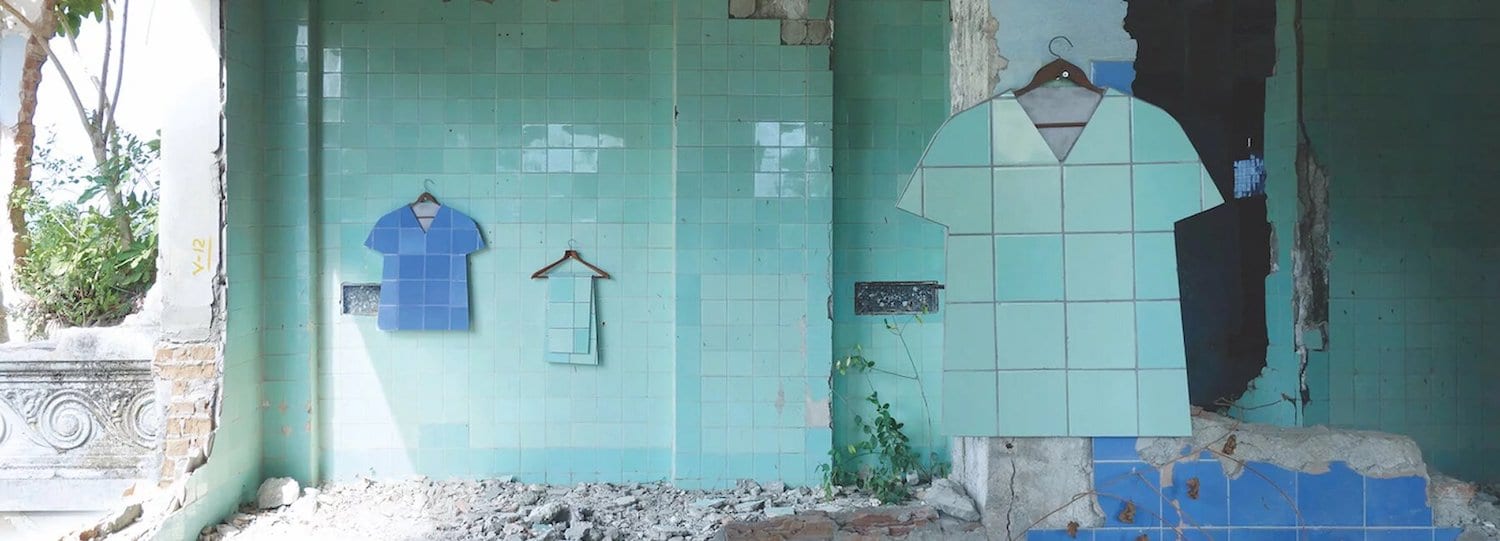
The sculptures are currently presented by Gallerie Continua in Zadyrova’s Resistance of Matter exhibition (Les Moulins, October 13 – December 29, 2019) as well as previously displayed during the Venice Art Biennale 2019.
This latest installment repurposes ceramic tiles from a hotel in venice to construct items of clothing and bedding, some of which hang from clotheslines suspended outside the back of the central pavilion and are visible through the windows.
DesignBoom
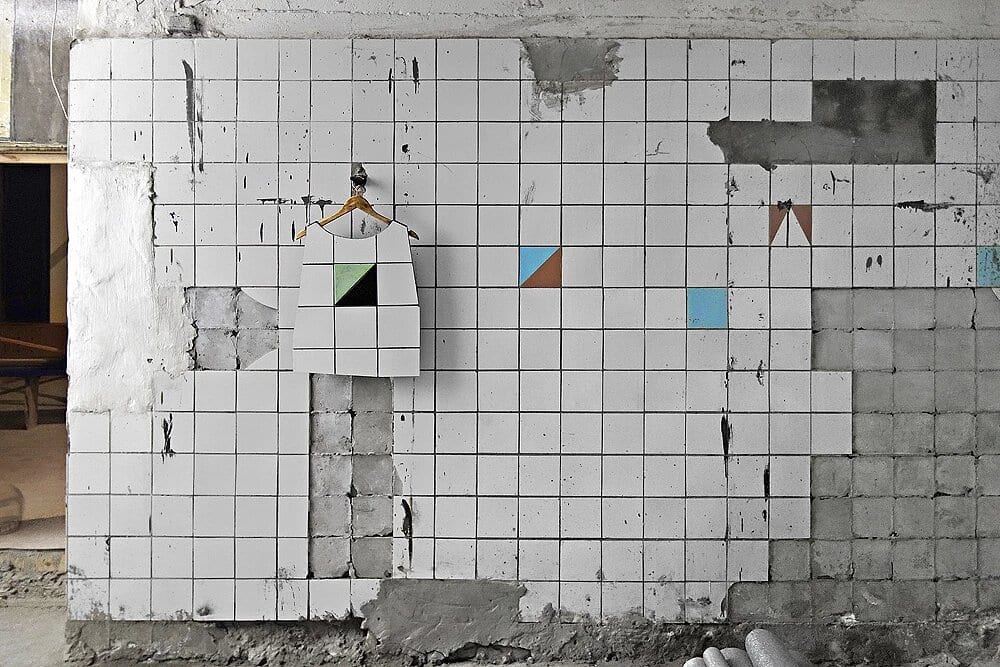
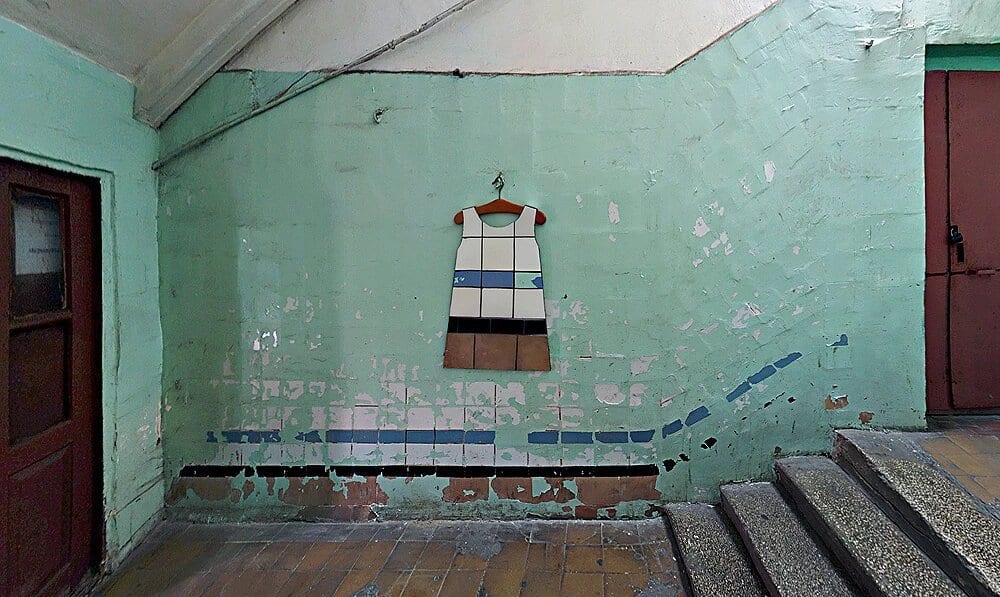
About the Artist: Although she works in multiple formats, Zhanna Kadryova is best known for her mosaics that critique Soviet aesthetic traditions by evoking the styles of Constructivism and Socialist Realism. Her use of the medium alludes to its history as an ideological art form during the Soviet era and its more decorative function following Ukrainian independence. In the installation Crowd (2012–13), she assembled collages of newspaper photographs on 40 glass panels, removing signifiers of context, geography, and class. The aggregation of faces functions as a metaphor for protests, demonstrating how individuality dissolves within larger political movements. ––Artsy
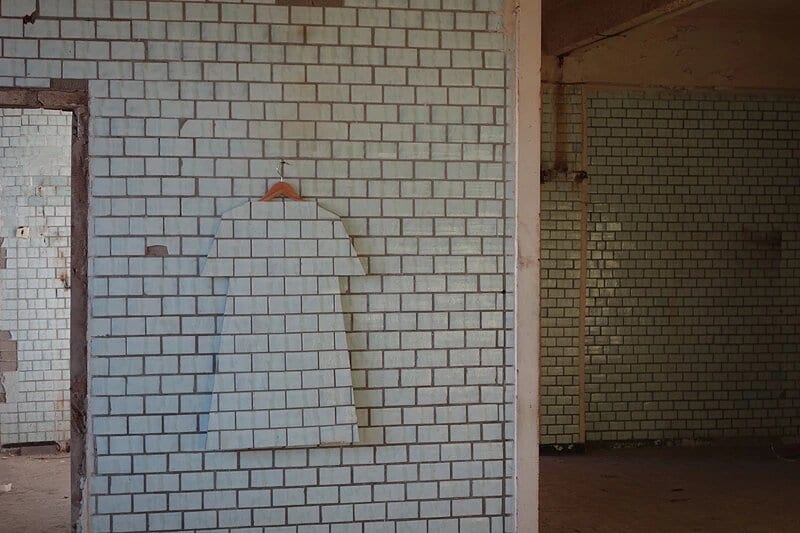
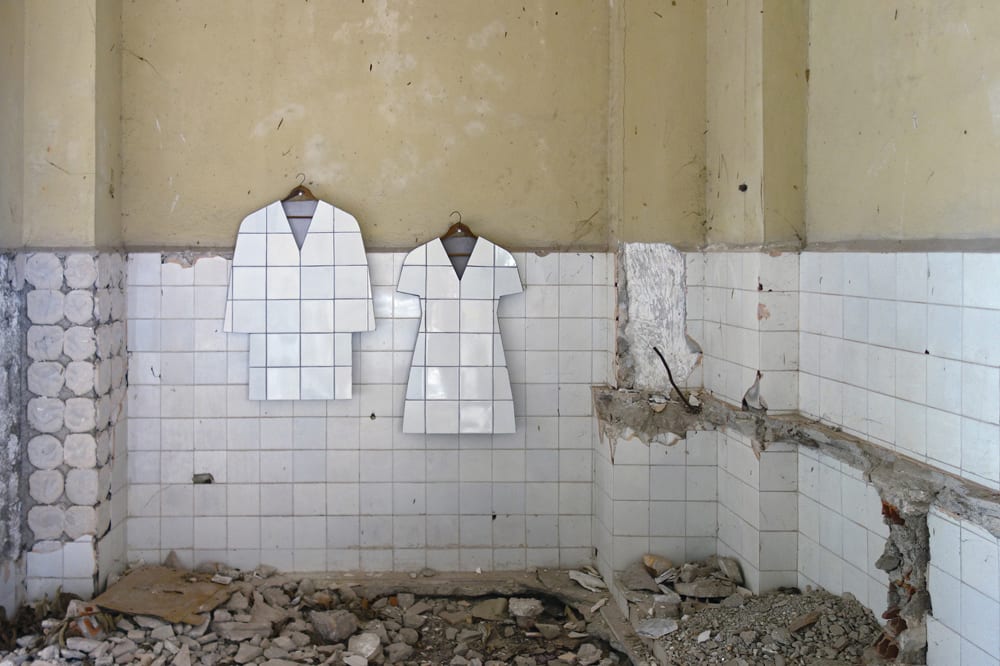
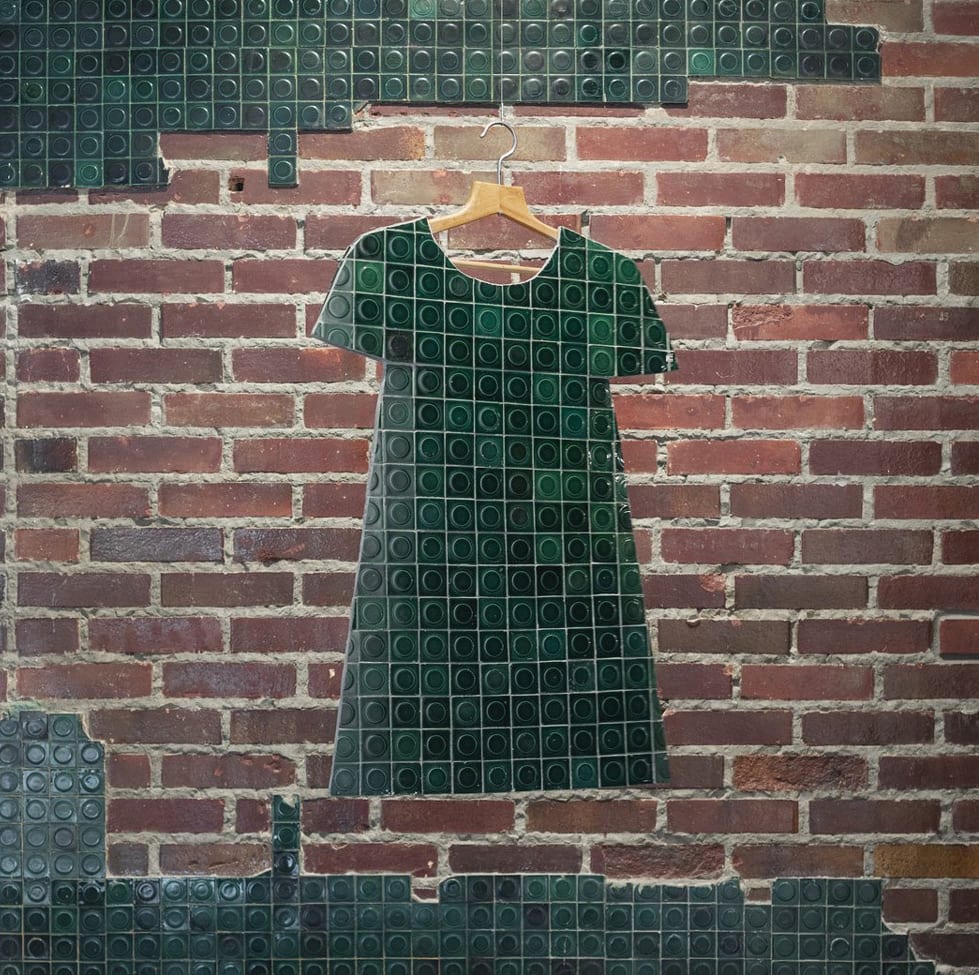
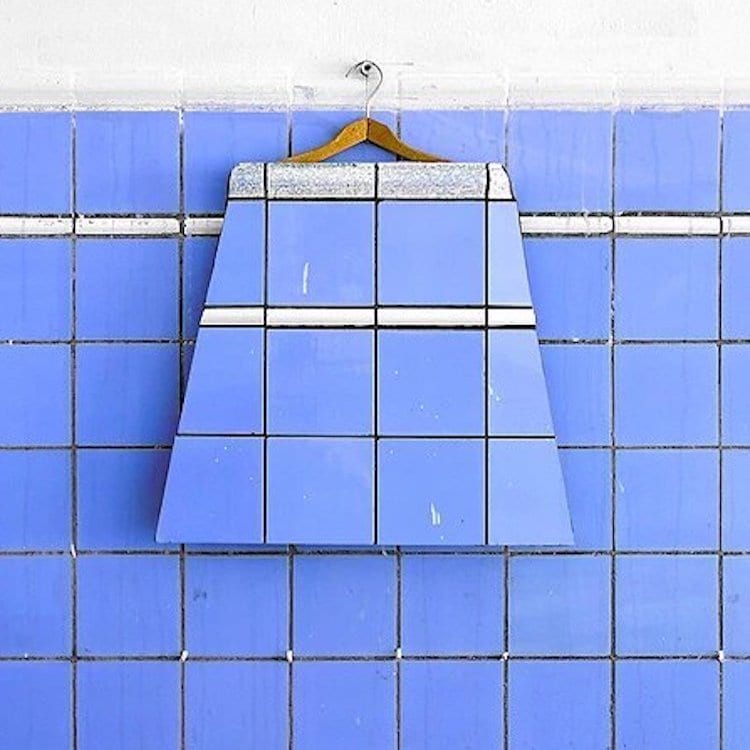
I saw Zhanna Kadryova‘a work at the Venice Biennale. After talking to a number of artists and critics attending the Biennale, I returned to her work for a second review. Initially it looked gimmicky to me, and too low in craft for initial seduction, which is important to me. But on second review, and on seeing the site specific work, I am convinced of her significance. The site specific work is especially powerful. She took me into an alternate universe of alienation from culture by setting me in an environment of the most common and familiar material, used for that which they are absolutely unintended And inappropriate. It worked.